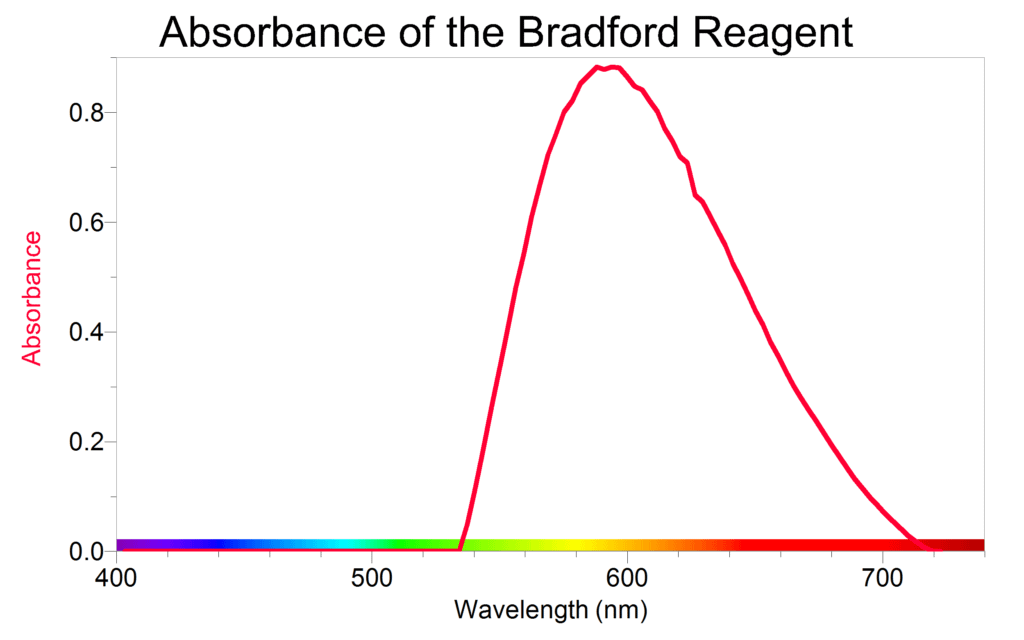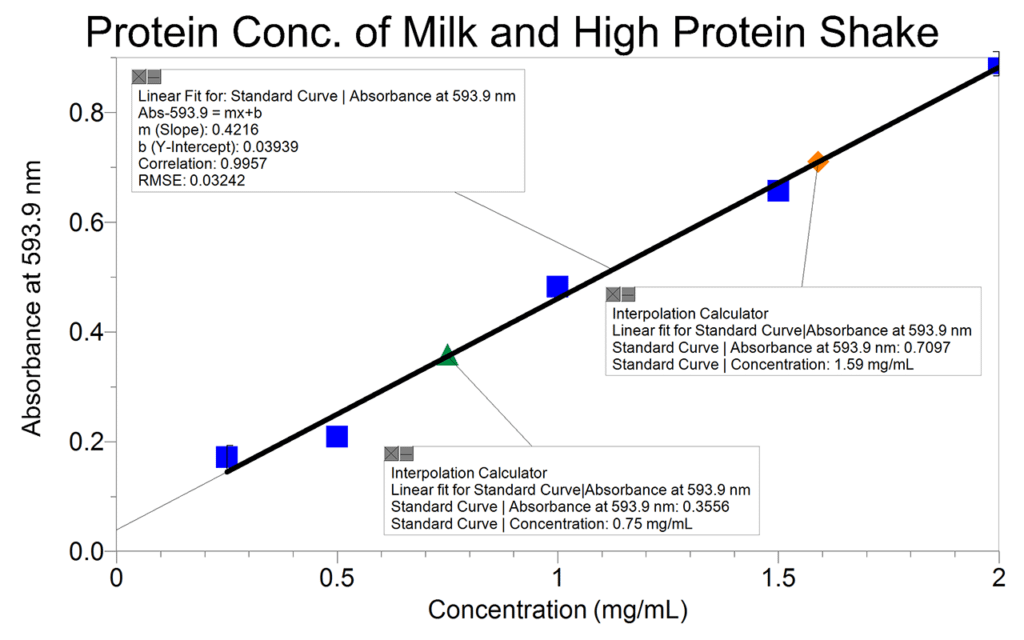John Melville, our Biology Staff Scientist, has developed a laboratory exercise that investigates proteins using our SpectroVis Plus spectrophotometer or our Colorimeter. This is an excellent exercise that contains several extensions that are appropriate for college courses.
This laboratory experiment is designed to introduce the student to the study of macromolecules. The Bradford assay is used to determine the protein content of two samples. This is an extremely sensitive assay for protein. The Bradford reagent contains a dye called Coomassie G-250 that can interact with specific amino acids. When the dye in the Bradford reagent interacts with specific amino acids it turns the solution blue. The greater the concentration of protein in solution the deeper the color will be.

If a set of known protein concentrations are allowed to react with a known concentration of Bradford reagent, the absorbance of the resulting solutions can be measured with a spectrophotometer or Colorimeter to create a standard curve. Example data are presented below. To determine the protein concentration of an unknown solution, simply measure its absorbance and see where it falls on the standard curve. Because the relationship is linear, you can calculate the protein concentration using the formula for the standard curve.

This exercise is taken from An Introduction to Macromolecules, Lab 17 in Advanced Biology with Vernier and is adapted from the Got Protein?™ Kit developed by Bio-Rad Laboratories, Inc. (Catalog # 166-2900EDU). Example data are presented below. Several ideas on how to make this an inquiry-based activity can also be found in our teacher’s instructions.
Download Macromolecules Experiment PDF »
If you have questions about this exercise contact our Staff Scientist in Biology, John Melville at jmelville@vernier.com.
